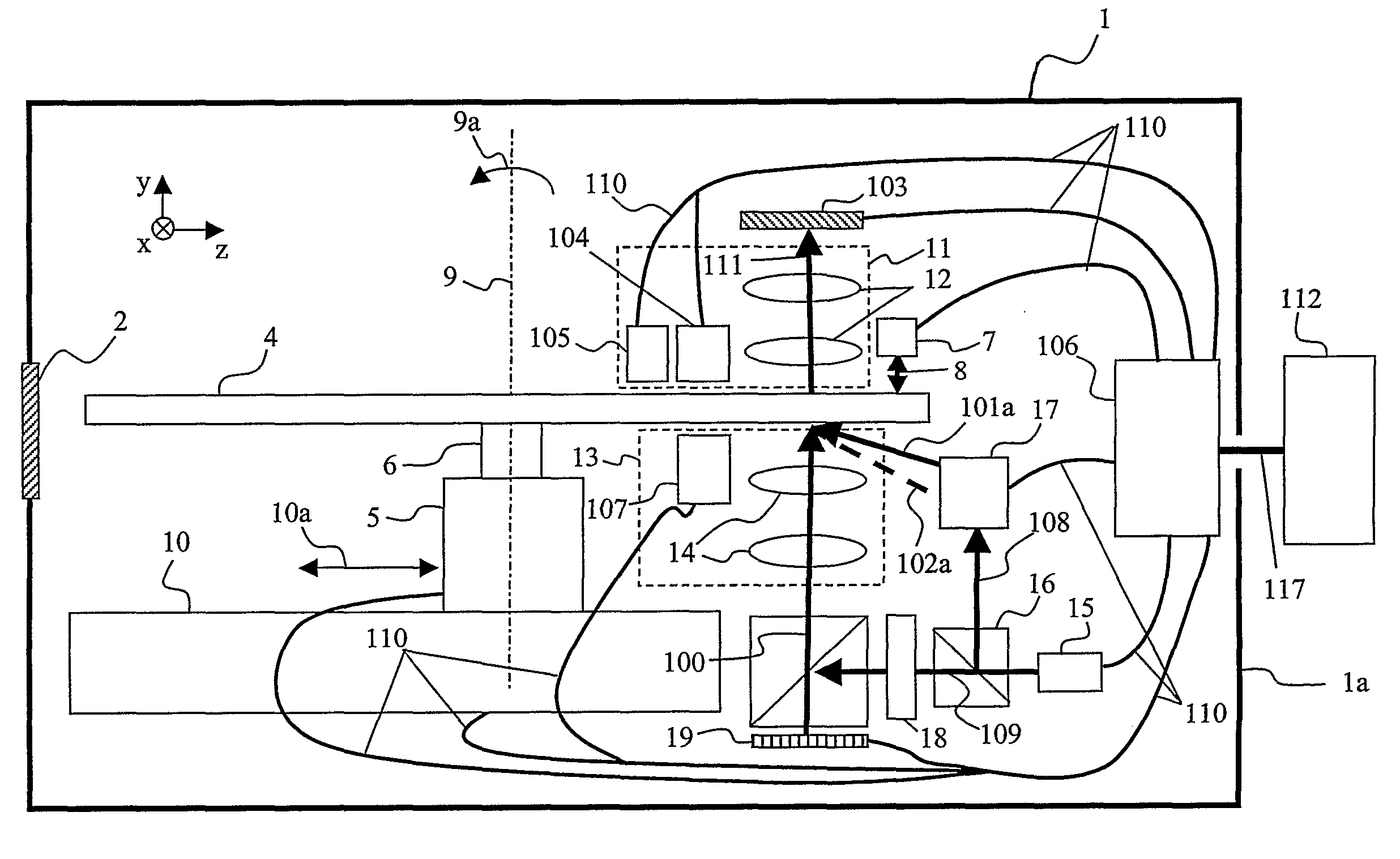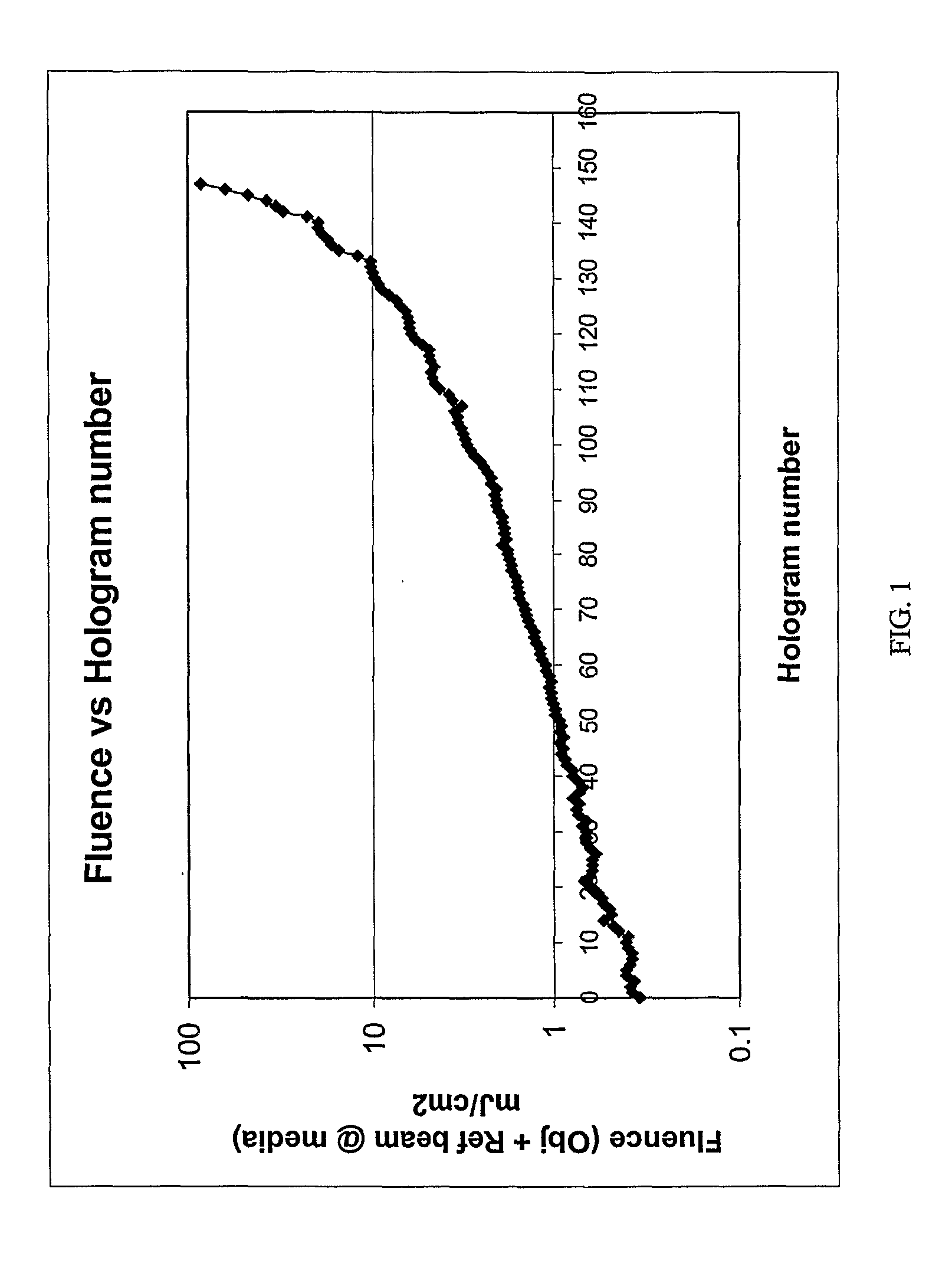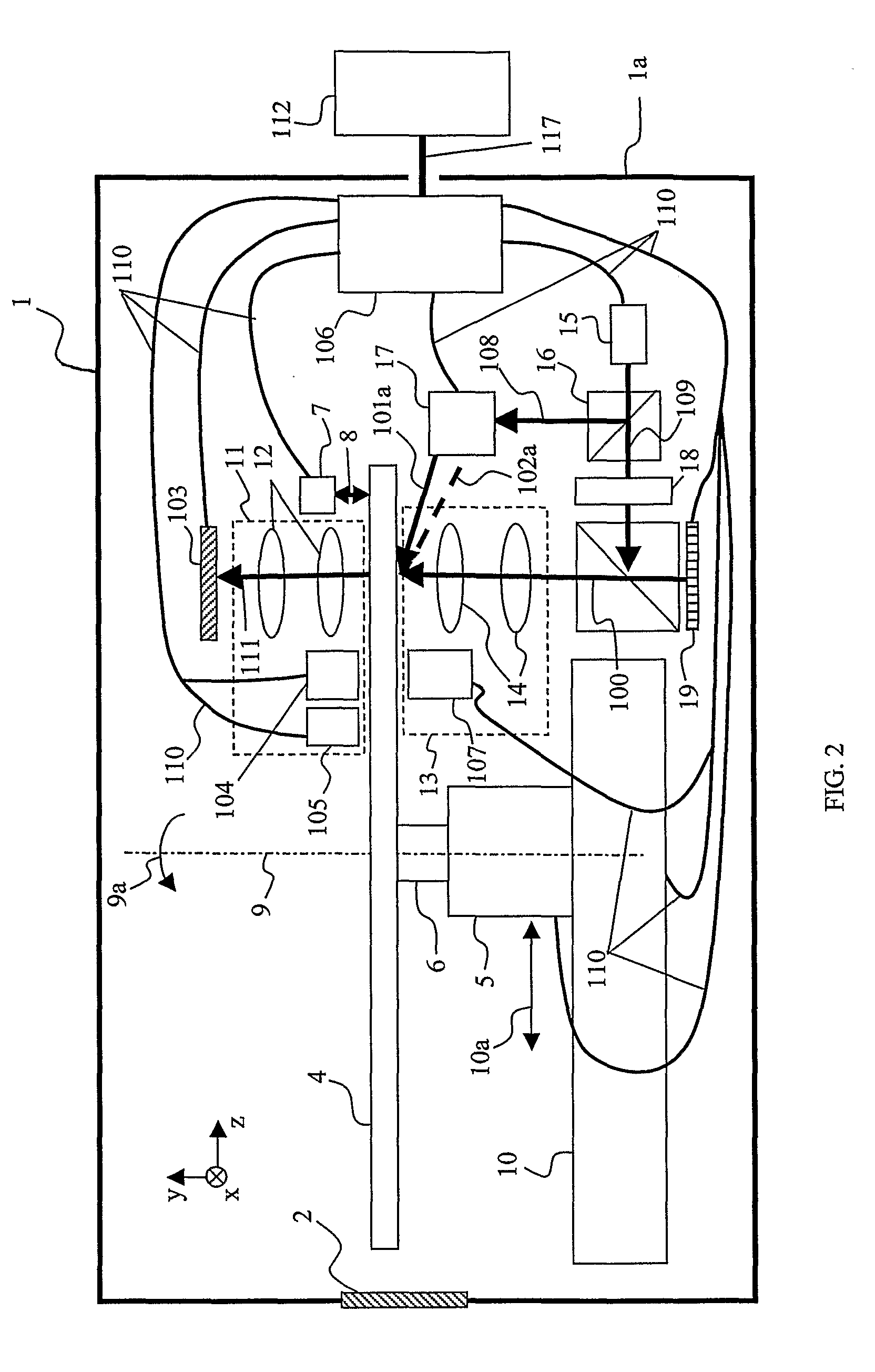Methods And Apparatus For The Fixing Of Holographic Media In Holographic Data Storage Systems
a technology of holographic data and data storage system, which is applied in the field of holographic data storage, can solve the problems of limiting the storage capacity of the hdss, affecting the performance of the holographic data storage system, and affecting the quality of the holographic data, so as to reduce the strength of such noise gratings, reduce the electrical power of operating the source, and reduce the effect of exposur
- Summary
- Abstract
- Description
- Claims
- Application Information
AI Technical Summary
Benefits of technology
Problems solved by technology
Method used
Image
Examples
Embodiment Construction
[0029]FIG. 2 depicts a HDSS 1 in a light tight enclosure la. The HDSS uses a disc providing a removable holographic media 4. The enclosure 1 a has an aperture 2, preferably light-tight, through which holographic media 4 can be inserted into the HDSS. The holographic media may be contained within a cartridge. An example of such a cartridge is described in U.S. Provisional Patent Application No. 60 / 510,914, now U.S. patent application Ser. No. 10 / 965,570, and International Application PCT / US04 / 33921, both filed Oct. 14, 2004. For simplicity of illustration, the cartridge, and associated shutters and shutter mechanics for the cartridge are not shown. For simplicity of illustration, the cartridge loader or other movable fixture that accepts the inserted holographic media and ensures that said holographic media is aligned and mated to the mechanics required to actuate said media within the HDSS are also not illustrated. In FIG. 2 the holographic media 4 is shown attached to a rotary spin...
PUM
 Login to View More
Login to View More Abstract
Description
Claims
Application Information
 Login to View More
Login to View More - R&D
- Intellectual Property
- Life Sciences
- Materials
- Tech Scout
- Unparalleled Data Quality
- Higher Quality Content
- 60% Fewer Hallucinations
Browse by: Latest US Patents, China's latest patents, Technical Efficacy Thesaurus, Application Domain, Technology Topic, Popular Technical Reports.
© 2025 PatSnap. All rights reserved.Legal|Privacy policy|Modern Slavery Act Transparency Statement|Sitemap|About US| Contact US: help@patsnap.com



